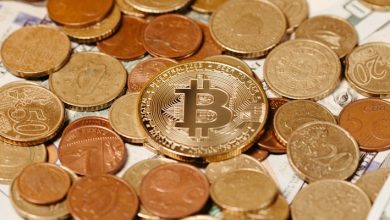How to Identify and Invest in Promising Altcoins

- Understanding the basics of altcoins
- Researching potential altcoin projects
- Evaluating the team behind the altcoin
- Analyzing the technology and use case of altcoins
- Assessing market trends and potential for growth
- Diversifying your altcoin investment portfolio
Understanding the basics of altcoins
Altcoins are alternative cryptocurrencies to Bitcoin. They have gained popularity in recent years due to their potential for high returns on investment. Understanding the basics of altcoins is crucial for investors looking to diversify their portfolios.
One key aspect to consider when investing in altcoins is the technology behind them. Each altcoin operates on its own unique blockchain, which is the underlying technology that enables transactions to be recorded securely and transparently. It is essential to research the technology of an altcoin before investing to ensure it is reliable and has the potential for long-term success.
Another important factor to consider is the team behind the altcoin. A strong and experienced team can significantly impact the success of an altcoin. Investors should research the backgrounds of the developers, advisors, and other team members to assess their credibility and expertise in the cryptocurrency space.
Market demand is also a crucial consideration when evaluating altcoins. Understanding the market demand for a particular altcoin can help investors determine its potential for growth. Factors such as use cases, partnerships, and community support can all influence the demand for an altcoin.
Overall, investing in altcoins can be a lucrative opportunity for investors who are willing to do their due diligence. By understanding the basics of altcoins, researching the technology, team, and market demand, investors can identify promising altcoins and make informed investment decisions.
Researching potential altcoin projects
When researching **potential** altcoin projects to invest in, it is important to **conduct** thorough due diligence to **ensure** you are making **informed** decisions. Here are some **tips** to help you **identify** promising altcoins:
- **Check** the **team** behind the altcoin project. Look for **experienced** developers and advisors with a **proven** track record in the **cryptocurrency** space.
- **Evaluate** the **technology** and **innovation** behind the altcoin. **Look** for **unique** features and **use** cases that **differentiate** it from **other** cryptocurrencies.
- **Assess** the **market** potential of the altcoin. **Consider** the **size** of the **target** market and the **demand** for the **product** or **service** the altcoin **offers**.
- **Review** the **community** **support** and **engagement** for the altcoin. **Active** **communities** can **help** drive **adoption** and **increase** the **value** of the altcoin.
- **Look** for **transparency** and **communication** from the altcoin **team**. **Regular** updates and **open** **dialogue** can **build** **trust** with **investors**.
By **following** these **guidelines**, you can **narrow** down your **options** and **identify** altcoin projects with **strong** **potential** for **growth**. **Remember** to **diversify** your **portfolio** and **only** **invest** what you can **afford** to **lose** in the **volatile** **cryptocurrency** market.
Evaluating the team behind the altcoin
When evaluating the team behind an altcoin, it is crucial to conduct thorough research to determine the credibility and expertise of the individuals involved. **Look** for information about the team members’ backgrounds, qualifications, and previous experience in the cryptocurrency industry. **Check** if they have a track record of successful projects or if they have been involved in any controversies in the past.
Additionally, **consider** the size and diversity of the team. A larger team with members specializing in different areas such as technology, marketing, and finance can be a positive sign. **Diversity** in terms of gender, ethnicity, and geographical location can also bring different perspectives and ideas to the project.
It is also important to **evaluate** the transparency of the team. **Check** if they provide regular updates on the project’s development and communicate openly with the community. **Transparency** can help build trust and credibility with investors.
Furthermore, **look** for partnerships and collaborations that the team has established. **Partnerships** with reputable companies or organizations can provide validation and support for the project. **Collaborations** can also help expand the project’s reach and user base.
In conclusion, evaluating the team behind an altcoin is a critical step in identifying promising investment opportunities. By conducting thorough research and considering factors such as team members’ backgrounds, transparency, diversity, and partnerships, investors can make more informed decisions and mitigate risks associated with investing in altcoins.
Analyzing the technology and use case of altcoins
When it comes to identifying and investing in altcoins, it is crucial to analyze the technology and use case behind each coin. Understanding the technology that powers an altcoin can give you insight into its potential for long-term success. Additionally, evaluating the specific use case that the altcoin is designed to address can help you determine whether it has real-world utility and value.
One key aspect to consider when analyzing the technology of an altcoin is its underlying blockchain protocol. Different altcoins may use variations of blockchain technology, such as proof of work or proof of stake. It is essential to research how these protocols work and assess their security, scalability, and decentralization features. This information can help you gauge the overall robustness and reliability of the altcoin’s technology.
Furthermore, examining the use case of an altcoin involves understanding the problem it aims to solve or the niche market it targets. Some altcoins are designed for specific industries or applications, such as decentralized finance, supply chain management, or identity verification. By evaluating whether the altcoin’s use case is practical and in-demand, you can better assess its potential for adoption and growth.
Assessing market trends and potential for growth
When it comes to identifying and investing in promising altcoins, assessing market trends and potential for growth is crucial. By analyzing the market trends, investors can gain valuable insights into which altcoins have the potential to perform well in the future. Here are some key factors to consider when assessing market trends and potential for growth:
- Market Capitalization: One of the key indicators of a coin’s potential for growth is its market capitalization. Coins with a high market capitalization are generally considered to be more stable and less volatile.
- Trading Volume: Another important factor to consider is the trading volume of a coin. Coins with high trading volumes are more liquid and easier to buy and sell.
- Price Trends: Analyzing the price trends of a coin can provide valuable insights into its potential for growth. Look for coins that have shown consistent growth over time.
- Technology and Development: The technology behind a coin and the development team working on it are also important factors to consider. Coins with innovative technology and a strong development team are more likely to succeed in the long run.
- Community and Adoption: Finally, consider the community and adoption rate of a coin. Coins with a strong community of supporters and a high level of adoption are more likely to see continued growth in the future.
By carefully analyzing these factors, investors can identify altcoins with the potential for significant growth and make informed investment decisions. Remember to always do thorough research and due diligence before investing in any altcoin to minimize risks and maximize potential returns.
Diversifying your altcoin investment portfolio
When it comes to investing in altcoins, diversification is key to managing risk and maximizing potential returns. By spreading your investment across a variety of altcoins, you can reduce the impact of any single coin’s poor performance on your overall portfolio. Here are some tips for diversifying your altcoin investment portfolio:
- Research: Before investing in any altcoin, make sure to conduct thorough research to understand the project, team, technology, and market potential. Look for altcoins that offer unique value propositions and have strong fundamentals.
- Spread your investment: Instead of putting all your money into one altcoin, consider spreading your investment across multiple coins. This way, if one coin underperforms, you won’t lose everything.
- Consider different sectors: Diversify your altcoin portfolio by investing in coins from different sectors, such as DeFi, NFTs, gaming, or privacy coins. This can help you capitalize on trends in multiple areas of the cryptocurrency market.
- Monitor your portfolio: Keep track of the performance of your altcoin investments and rebalance your portfolio periodically to ensure that it remains diversified. Consider taking profits from coins that have performed well and reinvesting them in other promising altcoins.
- Stay informed: Stay up to date with the latest news and developments in the cryptocurrency space to make informed decisions about your altcoin investments. Join online communities, follow influencers, and subscribe to newsletters to stay informed.
By diversifying your altcoin investment portfolio, you can reduce risk and increase the potential for higher returns. Remember to do your due diligence, spread your investment across different coins, monitor your portfolio regularly, and stay informed about the latest trends in the cryptocurrency market.



